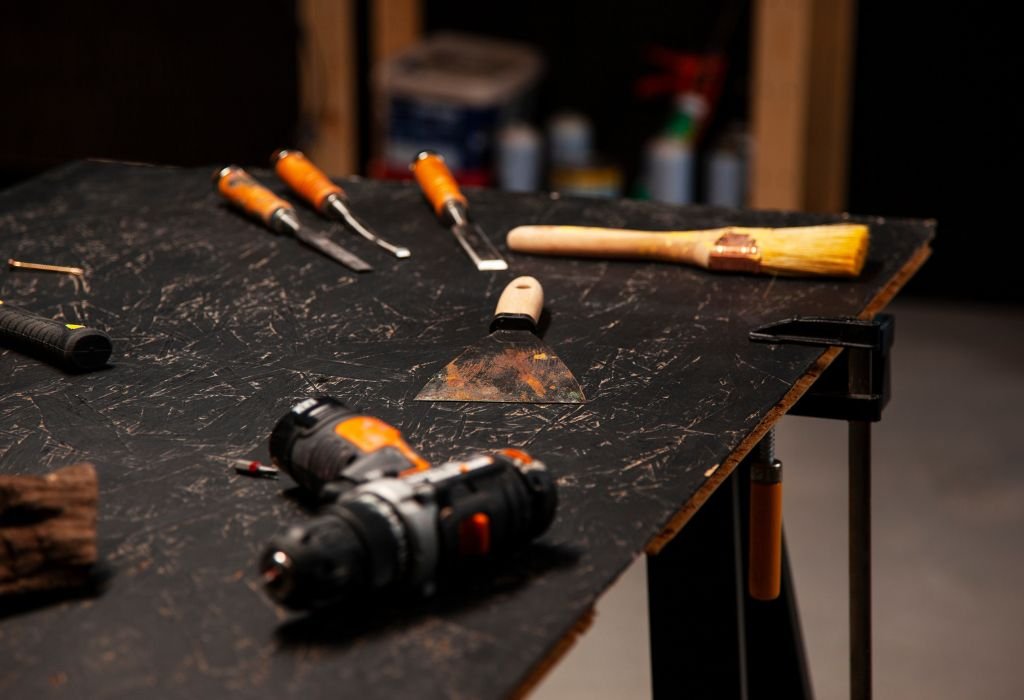Cordless drills have become an essential part of modern toolkits, whether for DIY projects at home or professional construction work. With the rise of battery-powered technology, compact models like the 12V cordless drill are becoming more common. But many people ask the same question: are 12V cordless drills any good? According to a market study, more than 60% of homeowners prefer cordless tools for convenience, and 12V drills are often the first choice for beginners. These drills are small, lightweight, and affordable, but compared to 18V or 20V models, they may appear less powerful. In this guide, we will explain exactly what a 12V drill can and cannot do, how it compares to higher-voltage models, and whether it deserves a place in your toolkit.
1. What Is a 12V Cordless Drill?

- A 12V cordless drill is a power tool that runs on a 12-volt lithium-ion battery, designed for light-duty drilling and screwdriving.
- It usually delivers around 200 to 300 inch-pounds of torque, which is sufficient for furniture assembly, small woodworking projects, and general home repairs.
- The compact design makes it easy to use in tight spaces where larger drills cannot reach.
- Most 12V drills weigh between 2 and 3 pounds, reducing hand fatigue during longer projects.
- These drills are considered entry-level tools, making them ideal for beginners or casual DIY users.
2. What Is an 18V/20V Cordless Drill?
- An 18V or 20V cordless drill is a higher-powered tool designed for medium to heavy-duty drilling and fastening tasks.
- These models typically produce 400 to 600+ inch-pounds of torque, allowing them to drill through hardwood, metal, and even masonry when equipped with a hammer function.
- They are heavier, often weighing 3 to 5 pounds, and come with larger battery packs for extended runtime.
- Professional contractors and serious DIYers prefer 18V/20V drills for their versatility and ability to handle demanding projects.
- While they cost more than 12V drills, their power and durability make them a long-term investment for frequent use.
3. Core Differences Between 12V and Higher Voltage Drills
- Power and Torque – A 12V drill produces enough torque for everyday tasks like assembling furniture or drilling into softwood. In contrast, an 18V/20V drill generates significantly higher torque, making it suitable for drilling into hardwood, metal, or masonry.
- Size and Weight – 12V drills are compact and lightweight, usually 2–3 pounds, while 20V models are heavier and bulkier. The smaller size of 12V drills makes them better for overhead work or long-duration projects.
- Battery Life and Runtime – A 12V battery drains faster under continuous use compared to the larger capacity of an 18V/20V battery. Heavy-duty users often prefer higher voltage models because of longer runtime.
- Price Range – 12V drills are much cheaper, often priced between $40 and $100, while 18V/20V drills can cost $120 or more depending on features.
- Target Users – 12V drills are ideal for homeowners and beginners, while 20V drills are built for professionals and demanding DIY projects.
4. Advantages of 12V Cordless Drills
- Lightweight and Portable – Weighing only a few pounds, 12V drills are easy to handle, reducing fatigue during long projects.
- Affordable – One of the biggest benefits is cost-effectiveness. They are budget-friendly and accessible for beginners.
- Beginner-Friendly – Simple controls and reduced torque make them safer and easier for new users.
- Compact Size – Their small body design allows them to fit into tight corners and small workspaces.
- Sufficient for Household Tasks – Perfect for drilling pilot holes, assembling furniture, hanging shelves, and general DIY work.
5. Advantages of 18V/20V Drills

- Higher Torque and Speed – These drills can handle hardwood, thick metals, and even concrete when paired with hammer mode.
- Versatility – Suitable for both light and heavy-duty projects, making them a universal choice for professionals.
- Extended Runtime – Larger batteries provide longer working hours without frequent recharging.
- Advanced Features – Many models include brushless motors, larger chuck sizes, and multiple speed settings.
- Professional Reliability – Built to withstand tough jobsite conditions and daily use without wearing down quickly.
6. Limitations of 12V Cordless Drills
- Limited Power – A 12V drill often struggles with dense hardwood, masonry, or thick metal. It is not designed for heavy-duty projects.
- Shorter Runtime – Smaller batteries drain quickly when used continuously, especially on tougher materials.
- Lower Torque – Compared to 18V/20V drills, the torque is much less, limiting its ability to drive large screws or bolts.
- Fewer Features – Most 12V models lack hammer functions or brushless motors, making them less versatile.
- Upgrade Needed Over Time – Many DIYers eventually feel the need to move to a higher voltage drill as their projects become more advanced.
7. Limitations of Higher Voltage Drills
- Heavier and Bulkier – 18V/20V drills weigh more, which can cause hand and arm fatigue during long tasks.
- Higher Price – They are significantly more expensive than 12V drills, which may not make sense for casual users.
- Overkill for Small Jobs – High torque can sometimes damage soft materials or overdrive screws.
- Longer Charging Time – Bigger batteries require more time to recharge fully.
- Less Beginner-Friendly – For someone new to power tools, a 20V drill can feel intimidating and unnecessarily complex.
8. Which Drill Should You Choose?
- Choose a 12V drill if you are a homeowner, renter, or beginner who mainly needs a tool for assembling furniture, hanging shelves, or light carpentry.
- Choose an 18V/20V drill if you frequently work with tough materials like hardwood, thick metal, or masonry. Professionals and contractors usually prefer this option.
- If your budget allows, owning both is a smart choice: the 12V for quick, lightweight tasks, and the 20V for demanding jobs.
- Think about long-term use—starting with a 12V drill is cost-effective, but upgrading later is often necessary as projects grow in complexity.
9. Alternatives and Middle Options

- Impact Drivers – These provide higher torque for driving long screws and bolts but are less suitable for drilling holes. Great companion tool if you already own a 12V drill.
- Corded Drills – Unlimited power supply and cheaper than cordless models, but portability is limited since you need an outlet.
- Compact 18V/20V Models – Some brands offer lightweight 18V/20V drills that balance extra power with portability.
- Brushless 12V Drills – These deliver more efficiency and runtime compared to older brushed motor versions.
- Electric Screwdrivers – The smallest option for ultra-light jobs, good for electronics or furniture assembly.
10. FAQs About 12V Cordless Drills
- Are 12V drills powerful enough for home use? – Yes, they can handle most household tasks like furniture assembly and light carpentry.
- Can a 12V drill go through metal? – It can drill thin sheet metal, but thick steel requires a higher voltage drill.
- Do 12V drills last long? – With proper care, lithium-ion batteries last several years.
- What screw sizes can a 12V drill handle? – Small to medium screws are fine, but very long screws may cause stalling.
- Are 12V drills good for woodworking? – Yes, they work well for drilling pilot holes and light woodwork.
- Do they support brushless motors? – Many modern 12V drills include brushless technology for efficiency.
- How much do they cost? – Typically $40–$100 depending on brand and features.
- Are they beginner-friendly? – Absolutely, the lightweight design makes them safe and easy for first-time users.
- Which brands make the best 12V drills? – Bosch, Makita, Milwaukee, and DeWalt are among the most popular.
- Can a 12V drill replace a 20V drill? – No, for heavy-duty or professional work you’ll eventually need a 20V drill.
11. Final Checklist Before Buying
- Define your needs: light DIY use or heavy-duty projects.
- Compare torque and speed ratings between models.
- Check battery type—always prefer lithium-ion for longer life.
- Look for compact and ergonomic designs for comfort.
- Read product reviews to judge durability and performance.
- Consider whether you might upgrade later to a 20V drill.
- Stick with trusted brands for reliability and warranty coverage.
- So, are 12V cordless drills any good? The answer is yes—but only if you understand what they are designed for. A 12V drill is lightweight, compact, affordable, and perfect for homeowners, beginners, or anyone who needs a reliable tool for everyday projects like furniture assembly, hanging shelves, or light woodworking. However, it is not the best choice for heavy-duty tasks such as drilling into concrete, driving long screws into thick lumber, or handling professional construction jobs. In those cases, an 18V or 20V drill is a smarter investment.For many people, the ideal solution is to start with a 12V drill and upgrade later when their projects demand more power. This way, you get the benefits of portability and ease of use while keeping your budget under control. And if you want the most flexibility, owning both a 12V and a 20V drill ensures you always have the right tool for the job.
Whether you’re a casual DIY enthusiast or a serious builder, choosing the right drill depends on your needs, budget, and future projects. Evaluate your tasks carefully, compare specifications, and make sure you invest in a drill that matches your work style. With the right choice, your cordless drill will be one of the most valuable tools in your toolbox.

I’m John F. Nicholas, the founder, lead writer, and drill enthusiast behind 101drill.com. With years of hands-on experience in power tools and DIY projects, I created this platform to share practical knowledge, expert tips, and real-world insights to help others master the art of drilling.
